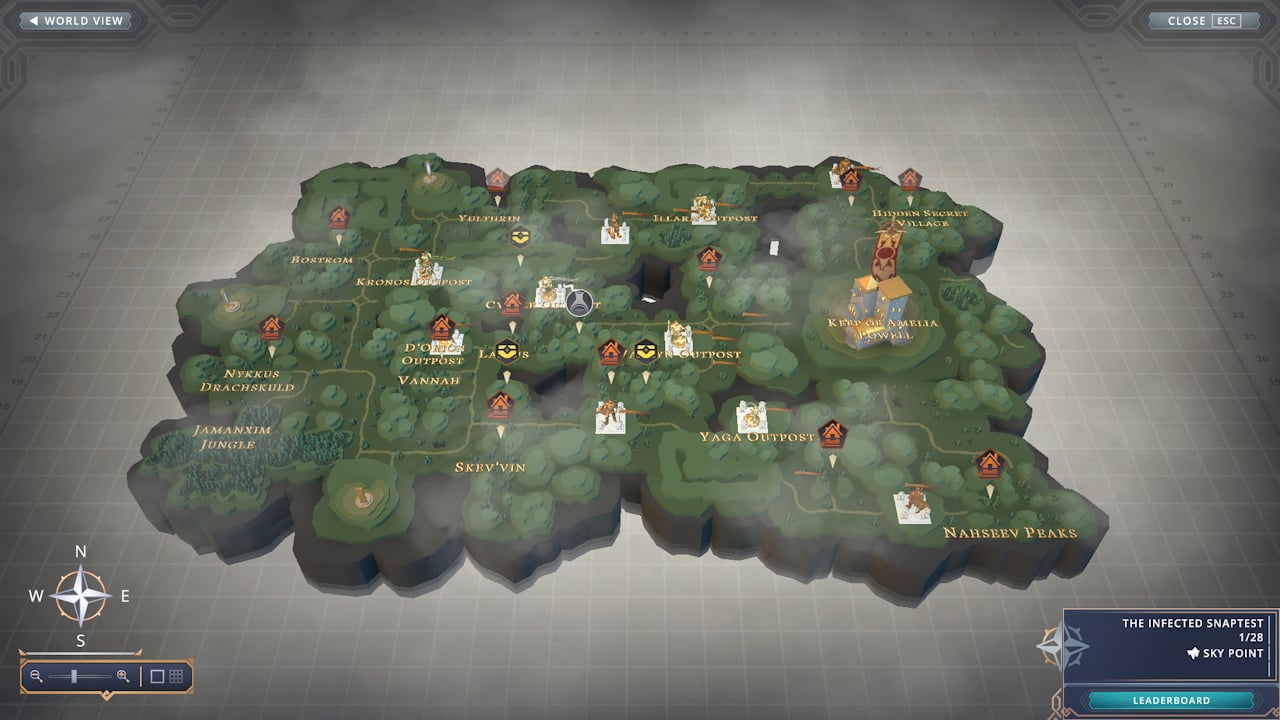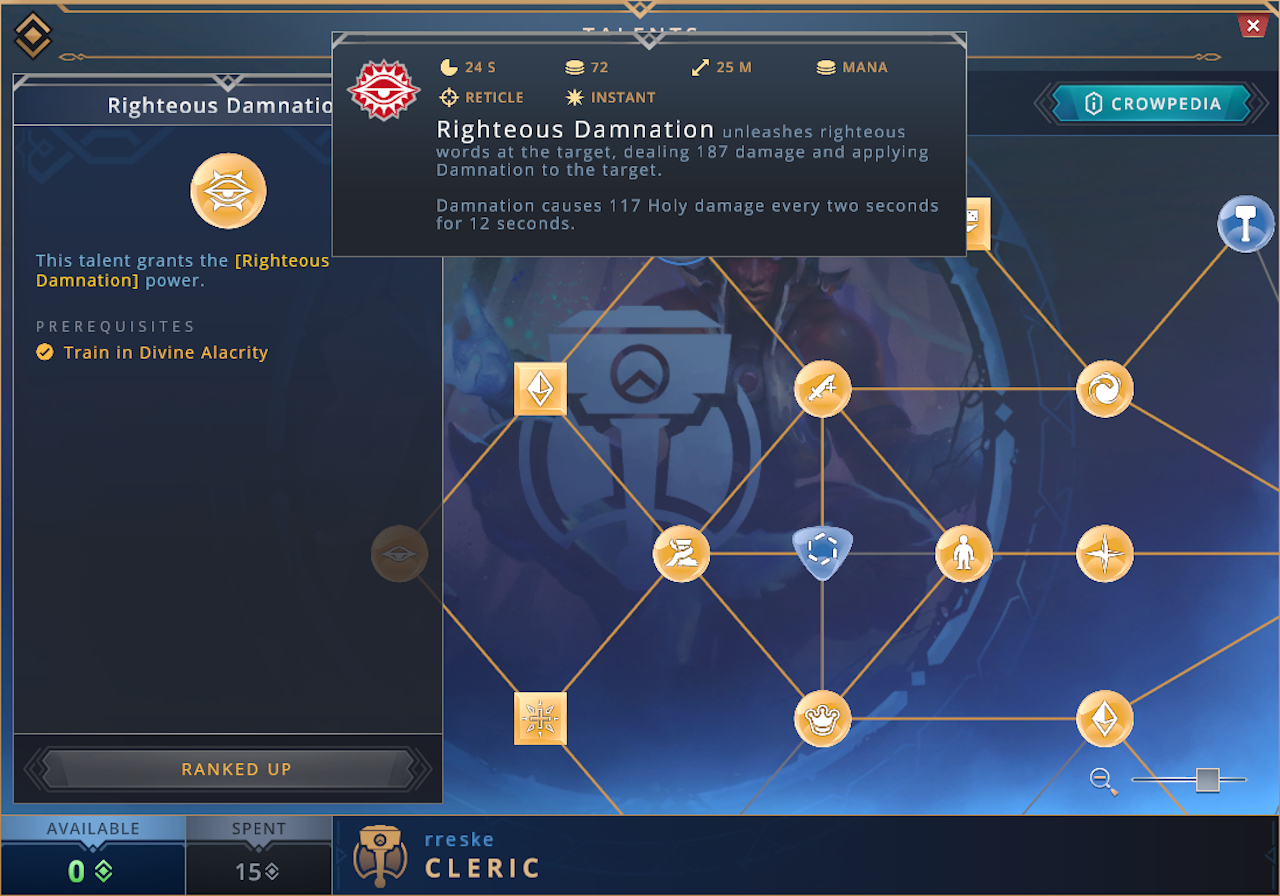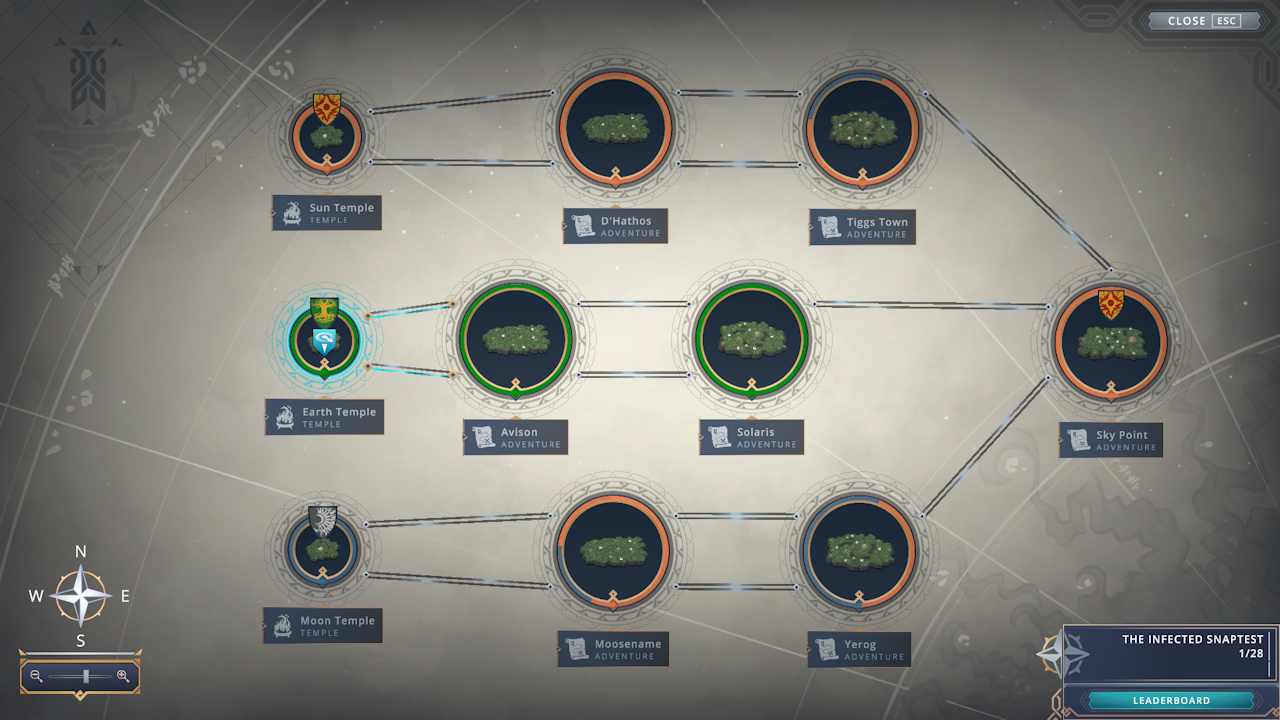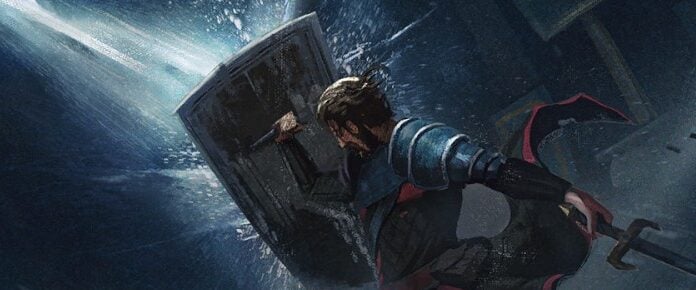
This week has brought another massive update to Kickstarted MMORPG Crowfall: ArtCraft describes Update 6.400 aka Transformation as a “major balance pass of combat, attributes and loot across every world and ruleset.” It offers players a new attribute system, updates to leveling and the level cap, performance improvements, new talents and powers, the last leg of the new player experience, Crowpedia integration, the new lobby UI, and gobs more.
Ahead of the launch, we chatted with Creative Director J. Todd Coleman, Design Director Thomas Blair, and Principal Designer Rhea Shelley to dig in deeper on what players can expect from this update – and what’s still to come in what we’re hoping will be Crowfall’s big launch year!
MassivelyOP: Since the New Year, players have been excitedly expecting the first update of 2021. Leveling up over and over has always been one the sticking points for me during any game’s early access periods. I understand it, but I do get tired of it. So one of the features I’m most looking forward to in 6.400 is the update to leveling. Can you describe how this system is different from what players have experienced so far?
Design Director Thomas Blair: Increasing the quality of your characters via the crafting system has long been part of Crowfall. (It is one of the unique things about Crowfall’s character progression.) The downside was the system was very confusing unless you actually knew how to do it. Not only was it difficult to figure out how to acquire a higher quality vessel and navigate some challenging user interfaces, it also forced the players to go back to level 1 and replay the new player tutorial. Then on top of all that, you’d have to fully re-level that character. This led to some players not using the system at all, and those that did, tended to skip entire qualities of rarity completely.
We simplified the whole process mechanically, by simply having the player click an inventory item (the upgraded player character vessel). Clicking the inventory item not only adds all the stats of the higher quality vessel to your character but also unlocks another max level for the player to progress through. (So if you are 30, clicking a new vessel unlocks the ability for the player to get to 31.) The smooth part is each vessel quality upgrade requires the previous vessel quality to be at max level, (i.e., an uncommon quality vessel grants max potential level 32, and a rare quality vessel requires 32.). We made sure it is easy to understand to ensure players are motivated to participate in the system.
This also allowed us to add an additional five levels beyond our previous max of 30, and leverage more of the world content in many ways. We always had a concern about how low-level, high-quality characters would continue to progress and how to message that to the players. Now we don’t! Once again the whole upgrade process just feels very intuitive and rewarding.

It wasn’t that long ago that we saw the new player tutorial introduced in Crowfall with the beta release. At the time, you had described it as the first two chapters of a three-chapter system. Is this update the final chapter that completes the new player tutorial system? If so, could you explain how it wraps up the tutorial experience and prepares players for “the real game”?
Co-Founder and Creative Director J. Todd Coleman: It was a bit of a challenge to get the third chapter of the new player experience working, actually, because this is the point in the learning curve where we really needed to start to introduce the players to the territory conquest game — capturing outposts, forts, keeps and castles and earning the favor of the gods. Since a lot of these activities are competitive, that means the systems require the involvement of other players. We had to find a way to bridge the player into these systems without dropping them into “the deep end of the pool,” meaning the PvP worlds that will, by definition, be filled with more experienced players.
The answer that we came up with was to add more structure to the 3-Faction world, “the Infected.” We separate the three factions into geographically-dispersed zones in a hub-and-spoke model. Each of the factions has a starting Temple (which is completely safe) at the end of one spoke. As the player progresses through the game, they move closer to the central hub, and to the players in the opposing factions. There is an enormous castle in the center of the hub zone that can only be owned by one of the three factions. It’s not an uncommon model in three faction games — it presents graduated levels of PvP activity for players to engage in as they feel increasingly comfortable — and we felt like it was a better approach than making a set of “canned” quests to try and teach the remaining game systems.
If the God’s Reach zones are meant to teach players about beginner mechanics and get them up through the first 15 levels or so, does that mean that the Infected zones are intended to be tutorials for the remainder of a vessel’s levels? Are the Infected zones primarily intended to play as tutorial zones or will they be just as useful for players to treat them as less risky, less extreme zones to farm and PvP in?
Coleman: The Infected really serves a few purposes. We do expect that new players will take their character through the remaining 15 levels in the Infected – but we also expect it to be a training ground for players who are on their 2nd, 3rd or Nth character. God’s Reach is really more of a starting world, and we needed an alternate path for people to be able to make alts without having to rerun the tutorial every time.
That said, it bears repeating that our leveling curve in Crowfall is incredibly fast compared to other MMOs. The leveling happens at basically Diablo-speed; you can take a character from 1st to 30th in a matter of a few hours… or less. We have a mechanic where we allow players to sacrifice items to the gods for XP. This gives players a shortcut to skip right over this process, if they are inclined.

Another big part of the leveling experience that is going to see a major shift is in the attribute system. The removal of stats from armor and even the lowering of the stats on weapons are new. Could you explain some of those changes and why the team chose them?
Principal Designer Rhea Shelley: Sure! There were a few things we did. First, we moved around a number of different statistics so that certain Attributes had more influence over things. Good examples are the various resistances in the game, such as Physical, Elemental, and Organic. Before, these were all increased by the Dexterity Attribute. Now, they’re a spread out across Dexterity, Spirit, and Constitution.
Next, we normalized the Attribute caps for every Attribute across every race. We also lowered the cap from 350 to 200. This not only made it easier to balance, but it also gave us more points to play with.
Next, we made each point put into an Attribute have more meaning. Before, it would give very small bonuses to the associated statistics. Now, each point spent has a lot more meaning. For example, previously a single point of Constitution gave you eight hit points. Now you get 20 hit points for a single point of Constitution.
We also rearranged our Talent Trees to take advantage of the new Attribute system. Players can now use Talent points to purchase Talents that grant them a variety of Attributes. The last thing we did was to give players a lot more Attribute points to play with. Before, you could get 60 points from reaching level 30. Now, you get 140 points. So, with more points in the Talent Tree, more points from leveling, and with those points actually doing more for your character, Attributes now have a much bigger impact on your character and how they play. The choice now is more in the player’s hands.
On one side, I like the idea that my build isn’t so heavily reliant on equipping exactly the right gear. If I’m spec’d heavily in strength, I just need to make sure my weapon is strength loaded. Yet on the other side, I’m sure it was a boon to the crafters. If players needed specific types of stats, they had to rely on the crafters to build that gear for them. Do you see this change impacting the crafting community in any way?
Shelley: It does impact certain things for sure. We did need to take some of the Attributes from certain pieces of equipment to make room for the new scale. There are pieces of equipment that still grant bonuses though and those should be sought after. And in some cases, you might actually seek out different Attributes than you had in the past. Did you max your Strength? Well, maybe a ring with Dexterity on it would be better now so you can get a higher Crit Strike. Maybe Intelligence for more Crit Damage. There are choices now that let the player strengthen their character towards the way they want to play. Also, don’t forget, crafted gear still grants bonuses to the various statistics that are powered by Attributes. Attributes alone won’t reach the cap of your favorite statistic. You will most certainly need the help of a good set of well crafted gear to reach those caps.

One thing that does concern me when I look at the new attribute system is whether or not Crowfall will end up in similar straits as Guild Wars 2’s traits system. No one ever wants to see a developer run into the same pitfalls that other big games have before them. Namely, GW2 originally had trait points that players could assign when they leveled up. However, at least according to ArenaNet at the time, players too often built their characters ineffectively. Ultimately the whole system was simplified and reworked. Personally, I rather preferred the more granular point allocation system. Has your team considered the complexity and potential issues of having such an intricate system that is also so important to the effectiveness of a player’s character in combat and other situations?
Shelley: I’m glad you brought this up. We most certainly wanted to make sure that points which players spent when they leveled up weren’t “wasted points.” Before, this was definitely possible. New players would pour all their points into their main Attribute, not realizing that later they would upgrade their vessel, which would add a new pile of points pushing them over their Attribute cap and essentially wasting those points spent at the beginning of the game. This certainly did not feel good once you realized what had happened. So now, vessels do still grant a nice big pile of Attributes for your character. But what they also do is increase the cap by the exact same amount. This means that no matter how many points you spent on any individual Attribute, the vessel will always give you more points, and the cap space to go along with it.
Now, another big change to the interface of the game itself is the lobby menu. It went from being a relatively simple list with a few different servers you could join to being a really stunning layout that seems to guide players more directly. What brought the team to update the layout in this way?
Coleman: Yeah, the interface team really did an amazing job with the new lobby. It’s a great question, and the answer requires a bit of context. Let’s start with the problem that we were trying to solve: The architecture of Crowfall is not like a traditional MMO. In a “normal” MMO, players are asked to select a server to play on and that becomes their home world, which is an instanced copy of the game. Except for the players, one server is an exact copy of every other server in the game. It’s not a universe, really. It’s a stack of copies of the same world.
Crowfall isn’t like that. Each of our servers is unique – unique maps, with different cities and castles, mountains and forests. The seasons are different, the weather patterns change – even the rules of the game itself (like “what happens to my loot when I die?” or “how many people can I invite into my group?”) will change from one game world to the next. Which is interesting enough, but here’s the real trick: Characters are not permanently locked to one of these servers. We expect your avatar to move around the game universe. We force it, actually, as old worlds die and new worlds come online. (We even have an embargo system to restrict what kind of items you are allowed to bring in and out of some worlds.)
That means the game is more of a game universe – closer to an EVE Online than a Guild Wars. That’s a fundamentally different model for a game. Now in a Space Sim, this inherently makes sense – I’m in a star ship, of course I can move around! But in a fantasy game, it’s rather unexpected.
So, back to your question about the lobby. We felt like it was important to surface this idea, Crowfall is a universe of unique worlds that the player can move between, from the moment the player enters the lobby. Unlike a Space Sim, we don’t have travel time – so instead our UI team (did I mention how amazing they are? I think I did) came up with a brilliant way to sell this metaphor to the player. It’s sort of like a map of the galaxy, but it’s also arcane and divine and ties directly into the lore of who you are and what you are doing.
You are an eternal Crow, brought back to life by divine intervention. The gods wish you to explore these worlds to bring them glory, wealth and power. This is what that universe looks like, conceptually. Our worlds are unique and they can be divided into bands. We have arranged them from left to right on a spectrum of risk and reward. You decide where you want to go, and the role that you wish to play, in this online universe.

Another feature I’m extremely interested in is the Crowpedia. It looks like a very key feature for building characters, especially in a game like Crowfall that has so many different options. I can already see myself spending more than a few evenings pouring down different paths. What sort of goals did you have in mind when designing the Crowpedia?
Blair: Clearly we are at a phase in the project where we are trying to make systems that are unique to Crowfall easier to understand and interact with as well as more fun to play (i.e., no one in this day and age needs to know how to work a vendor). In Crowfall, there are multiple ways to customize your character and make it different from others who play the same class. Players can attach “Disciplines” (we treat them like mini-classes) to their character, which tend to grant powers, stats, and in some cases equipment unlocks.
In the case of Disciplines, there was no good place to browse all the available disciplines and plan a character’s long term build. The Crowpedia now gives us a place where the player can see all Disciplines that are in game, as well as their stats at Legendary quality levels. (Yes, the disciplines do gain more stats as you upgrade their quality levels.) This is great because there are decisions that the player makes elsewhere (like Class Talents) that have an impact on what Disciplines your character can equip. As they say “Knowing is half the battle!” It is much easier to make informed decisions if you know what the potential outcomes are ultimately, giving the player more control.
Was the Crowpedia built with future proofing in mind? For instance, if a year from now you find that Druids become overpowered with the current set of disciplines available, so you choose to update them in some way. How well will the Crowpedia be able to stay current?
Blair: Absolutely! The Crowpedia just pulls the stats of all the Disciplines available and who can use them at run time. So there is very little, to no, updating needed to keep it current.
Having talked about all these new features and updates, from the leveling system, the attributes, and even the new lobby interface – are there any other quality of life or impactful features that players should really be looking forward to in this update?
Blair: Like all updates we have tons of fixes, quality of life issues, and content packed into Transformation (Update 6.400). Sadly most other issues tend to get eclipsed by one or two big features, but it is often the little things that no one notices consciously that really improve the overall experience.
Some of my favorites in Transformation are the on screen indicator when you loot or craft an item that shows what you acquired, the crafting procs bad luck protection, the tons of small optimizations to improve framerate, and the mount transmogrifications (a term that means the process by which a creature of one type, like a pack pig, can be changed into another – like a giant spider).

I wouldn’t be worth my salt if I didn’t at least ask about release. Leading up to this update, you’ve mentioned that the team still has launch planned for this year – is that still the case?
Coleman: Yes, we’re very close now. The team has (mostly) shifted from adding new things to the game to fixing bugs and achieving the level of polish that we need for launch. We have a few more things coming, but the game is nearing – well, I can’t say “completion” because it’s an MMO and these games are never done. The game is nearing the point where we will wipe the database for the final time and transition from “in development” to “live.”
With 6.400 out the door, what can players look forward to in the coming months?
Coleman: Testing, Testing and more Testing! And of course more client optimization. We’ve made some huge strides in this area, but we’re a game that entices large groups of players to congregate, so this is an area that requires a tremendous amount of investment… and we’re not quite there yet. We also have one or two more notable features coming pre-launch, the most significant answering the question “how do we provide PvP opportunities earlier in the player experience, for players who want to jump in early?” Then the development team will start to transition to post-launch features and content, while the live/operations/support teams focus on launch itself. That’s pretty exciting because we have a pretty long list of things we would really love to add to the game; more than enough to keep the universe feeling dynamic and alive.
Overall we are getting very, very close. We set out to make a game that was significantly different, and for the most part, I think we’ve done it. Now we get to deliver it to our backers, and see how our community grows.














